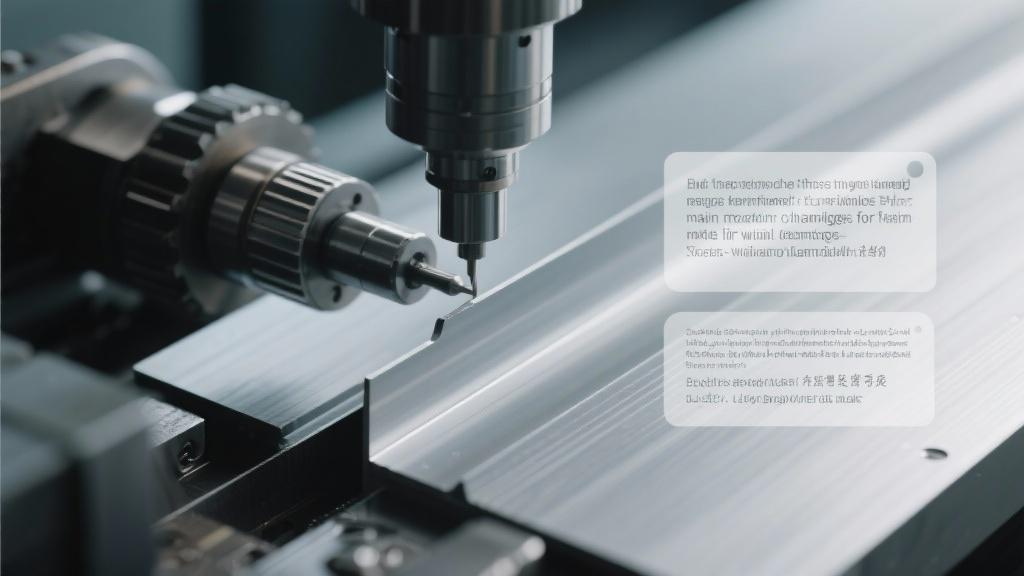Question: Why does machining thin-walled aluminum present challenges?
Answer: Machining thin-walled aluminum can be challenging primarily due to the material’s inherent properties. These parts are often lightweight and designed for strength, but when it comes to machining, this can lead to several issues. The first challenge is the increased risk of deformation during the machining process. The thin walls of these parts can easily bend or warp when subjected to cutting forces, leading to dimensional inaccuracies.
Another challenge is related to vibrations. Because of their lightweight nature, thin-walled components are highly susceptible to vibrations during machining. This can result in a decrease in surface finish quality and may further compromise the structural integrity of the parts. Additionally, tool wear is a critical concern. Thin-walled aluminum can cause rapid tool deterioration, particularly if the tools are not appropriately selected or if the machining parameters are not optimized.
Question: What measures can be taken to overcome these machining challenges?
Answer: To address the challenges associated with machining thin-walled aluminum, several strategies can be employed. First, using specialized tooling designed for light material and thin walls can help mitigate some issues. These tools are engineered to reduce cutting forces while providing a stable cutting edge, which significantly reduces the risk of deformation.
Next, optimizing the machining parameters is crucial. This involves careful adjustments to cutting speed, feed rate, and depth of cut. A common practice is to use a low cutting speed with a high feed rate. This approach minimizes heat generation and helps maintain dimensional accuracy, reducing the likelihood of thermal warping or tool wear.
Implementing fixtures or supports during machining can also greatly enhance stability. By securing the part properly, you minimize movement caused by cutting forces, which assists in achieving precision. In addition, using coolant or lubricants can help manage heat build-up, which is essential to prevent distortion.
Question: How does the choice of machining process affect these challenges?
Answer: The choice of machining process significantly influences the challenges faced during the production of thin-walled aluminum parts. Processes like CNC milling, turning, or even additive manufacturing can yield different results. For instance, CNC milling often allows for more controlled cutting parameters, which can help in avoiding deformation.
On the other hand, laser cutting offers an alternative that reduces mechanical stress on the material, allowing for precise cutting without the traditional force applied by mechanical tools. The downside, of course, is that it may not be suitable for all geometries and may leave rough edges that require additional finishing processes.
Ultimately, the ideal machining process depends on the specific application and the desired characteristics of the final product. This means that engineers and machinists should evaluate the intended use of the part alongside its design intricacies to choose the best method of production.
Question: Can the initial design of thin-walled aluminum parts influence the machining process?
Answer: Absolutely, the initial design is a critical factor that can influence all stages of production, including machining. If the design incorporates features that are too intricate or tight tolerances, it may severely complicate the machining process and increase the likelihood of encountering problems like truncations or excessive finishing.
Design considerations could involve implementing thicker areas strategically, which could serve as supports during machining but be minimized in regions where weight savings are prioritized. Encouraging designers to adopt design for manufacturability (DFM) principles can foster collaborations between design and manufacturing teams, ensuring that the designs are feasible for production.
For instance, uniform wall thickness can mitigate some of the challenges in machining, thereby enhancing productivity and final quality. Practical design iterations and prototyping can reveal insights that may not have been initially considered, offering a more holistic view of both aesthetics and manufacturability.
Question: What role do industry advancements play in addressing these challenges?
Answer: Industry advancements, especially in technology and materials science, are continually providing solutions to the challenges of machining thin-walled aluminum. Innovations like advanced cutting tool materials, such as carbide composites and coated tools, have shown significantly improved wear resistance and cutting performance. These developments make it easier to machine complex geometries without suffering from accelerated tool degradation.
Moreover, integrated manufacturing technologies, such as combining additive manufacturing with traditional machining processes, are helping to bridge gaps in design flexibility and material utilization. This hybrid approach can create stronger thin-walled parts while minimizing traditional machining time and risks.
In recent years, advancements in computer simulation and modeling software have also made an impact. These tools allow manufacturers to simulate real-world conditions and adjust machining strategies preemptively, significantly reducing trial and error in the manufacturing process.
By staying abreast of technological advancements, manufacturers can better navigate the complex landscape of machining thin-walled aluminum, ultimately leading to improved production outcomes and less waste.

Why is deformation a significant concern when machining thin-walled aluminum?
Deformation is a major concern because thin-walled aluminum parts are particularly susceptible to bending or warping during the machining process. The cutting forces can easily distort these delicate structures, compromising their dimensional accuracy.
Additionally, the lightweight nature of these components means they can flex more easily than thicker materials, making it crucial to manage machining parameters carefully to minimize this risk.
How do vibrations impact the machining process of thin-walled aluminum?
Vibrations can create several issues during the machining of thin-walled aluminum parts. The lightweight design often leads to increased vibration, which can affect the surface finish and overall quality of the component. High vibration levels can also cause tool wear to accelerate.
By understanding how vibrations affect the machining process, manufacturers can adjust their techniques and choose tools specifically designed to reduce this issue, leading to better overall results.
What role do machining parameters play in achieving accuracy?
Machining parameters such as cutting speed, feed rate, and depth of cut are critical for achieving accuracy when working with thin-walled aluminum. Optimizing these parameters helps reduce tool wear and prevents excessive heat generation, which can warp the material.
For instance, it is often effective to pair a lower cutting speed with a higher feed rate. This combination can minimize thermal distortion while maintaining precision in the finished part.
Can the design of thin-walled aluminum parts influence machining challenges?
Yes, the design plays a substantial role in the machining challenges encountered. Designs that feature uniform wall thickness can alleviate many issues associated with deformation and machining accuracy.
Furthermore, incorporating features that provide support during the machining process can lead to significant improvements in both integrity and productivity, highlighting the importance of design considerations in manufacturing and machining.
How do advancements in technology address machining challenges for thin-walled aluminum?
Advancements in cutting tool materials and integrated manufacturing technologies have made machining thin-walled aluminum more manageable. New materials, such as coated tools, offer enhanced durability and performance, which can lead to longer tool life and better precision.
Additionally, innovations like computer simulation software allow manufacturers to anticipate machining issues, enabling them to adjust strategies proactively rather than reacting to problems as they occur.



